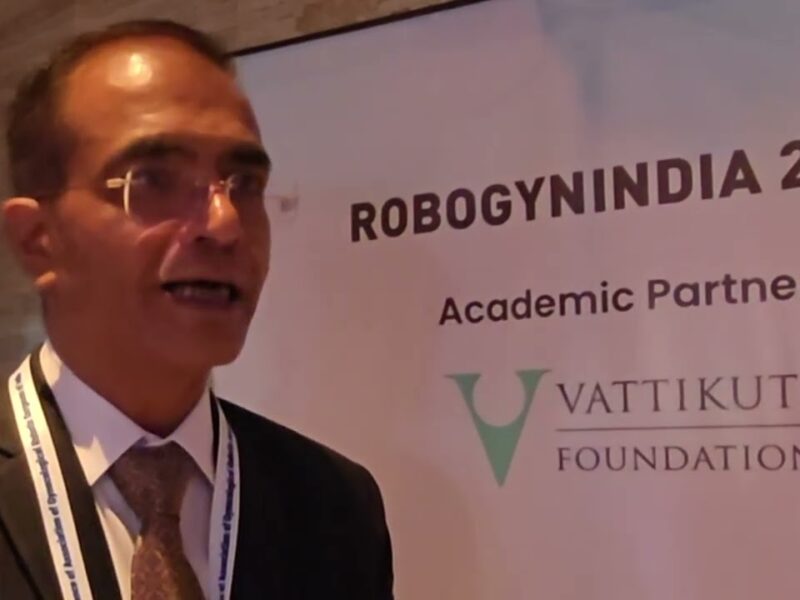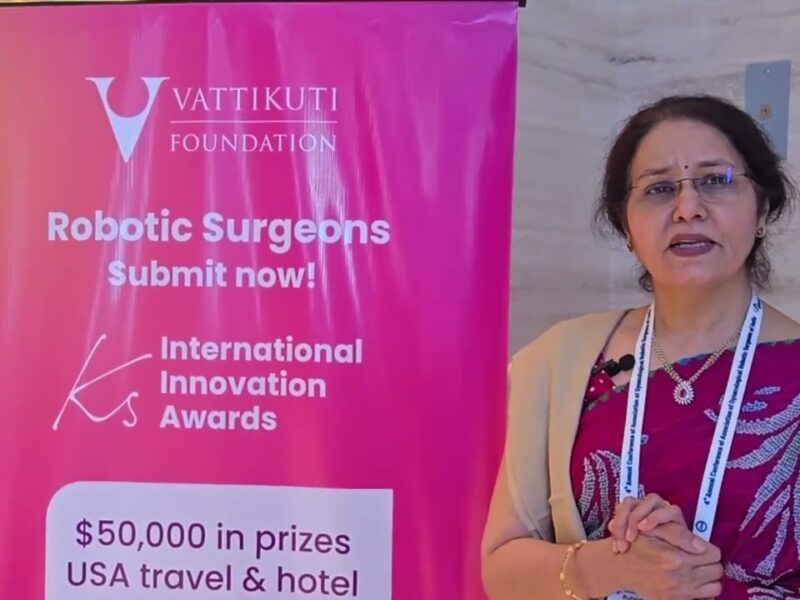RENAL ALLOGRAFT WITH MULTIPLE VESSELS – THE ROBOTIC REBUTTAL
This video was entered by Drs. Himanshu Sharma & Sandeep Nayak in the 2022 KS International Robotic Surgery Innovation Awards, sponsored by the Vattikuti Foundation. It was featured in the Vattikuti Symposium ‘Humans at the Cutting Edge of Robotic Surgery,’ held in Miami, Florida November 19, 2022.
Here is the Abstract:
RENAL ALLOGRAFT WITH MULTIPLE VESSELS – THE ROBOTIC REBUTTAL
Himanshu Sharma1, Rohit Kaushal, Pragnesh Desai, Samit Chaturvedi, Ruchir Maheshwari, Anant Kumar
Introduction: Robotic assisted kidney transplant (RAKT) is a feasible treatment option for patients with end stage renal disease. Despite the advantages of enhanced dexterity, wristed instruments, three-dimensional vision and scaled motion with robotic platform, the problem of increased warm ischemia times and longer vascular anastomosis time persists especially with multiple vessel renal allografts (MVRA).
Objective: To demonstrate technical feasibility of utilizing the internal iliac artery autograft (IIAA) in RAKT to reduce warm ischemia times in a triple vessel renal allograft.
Materials and methods: We present a novel demonstration of the technique to utilize the internal iliac autograft in RAKT to manage MVRA which has never been reported previously.
Surgical procedure: The technique is divided into three distinct steps. Step 1 is the retrieval of the IIAA, preparing the external iliac vessels for future anastomosis and raising a peritoneal flap for the transplant kidney. Step 2 involves bench dissection and ex-vivo vascular reconstruction to anastomose MVRA with IIAA. The final step is to anastomose this autograft-allograft complex with the external iliac vessels.
Results: We were able to perform a single in-vivo arterial anastomosis for a triple vessel renal allograft thereby reducing warm ischemia times.
Conclusion: Our technique eliminates the need for more than one arterial anastomosis, reduces the warm ischemia time and represents a novel method to manage grafts with multiple vessels during RAKT
See more at: vattikutifoundation.com/videos
Date
August 15, 2020






